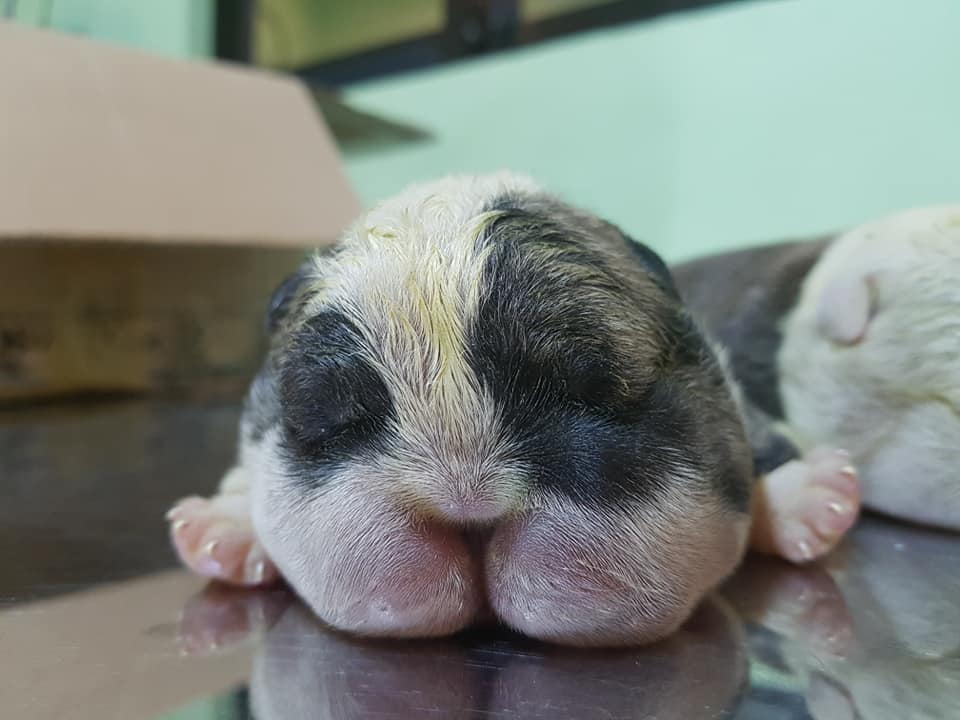Water puppy syndrome also known as Swimmer Puppy Syndrome, is a rare but devastating condition that affects newborn puppies. It causes the puppy’s body to fill with fluid, leading to severe swelling and ultimately, death. While the exact cause of water puppy syndrome is still unknown, it is believed to be genetic and is thought to affect certain breeds more than others. In this article, we will explore the causes, symptoms, and prevention of water puppy syndrome in greater detail.
Diagnosis
Symptoms of water puppy syndrome typically begin to appear within the first 24 to 48 hours after birth. The most common symptom is excessive swelling, which can affect the entire body or just specific areas such as the legs, chest, or abdomen. The swelling is often so severe that the skin becomes tight and shiny, and the puppy may have difficulty breathing. In addition to swelling, affected puppies may also have pale gums, a weak pulse, and a low body temperature.
Water puppy syndrome can be diagnosed through a physical examination and blood tests. Veterinarians may also use imaging techniques such as x-rays or ultrasound to confirm the diagnosis and assess the extent of the swelling.

Causes and Symptoms
The exact cause of Water Puppy Syndrome is not fully understood, but it is believed to be a combination of genetic and environmental factors. It can occur in any breed or mixed breed of dog and is not limited to specific breeds.
Some potential factors that may contribute to the development of Water Puppy Syndrome include:
- Genetics: There may be a genetic predisposition or abnormality that affects the puppy’s muscle and skeletal development, leading to the flattened chest appearance and muscle weakness.
- Prenatal environment: The position of the puppies in the womb or limited space during gestation may affect their musculoskeletal development, potentially contributing to the condition.
- Nutrition: Inadequate nutrition during pregnancy or nursing could potentially affect the proper development of the puppy’s muscles and skeletal structure.
Symptoms
Water Puppy Syndrome is characterized by the following symptoms:
- Flattened chest: The chest appears flat and may lack the normal rounded shape.
- Splayed legs: The puppy’s legs are often spread out to the sides, resembling a swimming motion when they try to move.
- Difficulty walking or standing: Affected puppies struggle to walk, stand, or support their weight properly. They may appear weak or wobbly.
- Lack of muscle tone: Lack of muscle tone: Puppies with Swimmer Puppy Syndrome often have reduced muscle mass and poor muscle tone.
Prevention
While Water Puppy Syndrome can be a challenging condition to manage, there are some preventive measures that can be taken:
- Proper nutrition: Providing the mother dog with a balanced diet during pregnancy and nursing is crucial for the healthy development of the puppies. Consult with a veterinarian to ensure the mother dog is receiving appropriate nutrition.
- Adequate space and exercise: Giving the puppies enough space to move around and providing opportunities for gentle exercise can help promote proper muscle and skeletal development.
- Early intervention: If you suspect that a puppy may be developing Water Puppy Syndrome, consult with a veterinarian as early as possible. They can provide guidance on physical therapy exercises and techniques that can help improve muscle tone and correct the posture of the affected puppy.
Treatment and Management
Treatment is primarily focused on managing the symptoms and providing supportive care. This may include administering fluids and electrolytes, draining excess fluid from the body, and providing oxygen therapy to improve breathing. However, despite the best efforts of veterinarians and breeders, many puppies with water puppy syndrome will not survive.
Prognosis and Long-Term Outlook The prognosis for puppies with the condition is generally poor, and many will not survive. However, early detection and supportive care can improve the puppy’s quality of life and increase the chances of survival for some. For those that do survive, ongoing care and management will be necessary to ensure their continued health and well-being.
Conclusion
Water puppy syndrome is a devastating condition that affects newborn puppies. While the exact cause of the condition is still unknown, it is believed to be genetic and is more commonly seen in certain breeds. Breeders can take steps to reduce the risk of producing affected puppies, but there is currently no cure for the condition. Early detection and supportive care can improve the puppy’s quality of life, but sadly, many affected puppies will not survive. As such, it is crucial that breeders prioritize the health and welfare of their animals and work to reduce the incidence of water puppy syndrome in their breeding.






